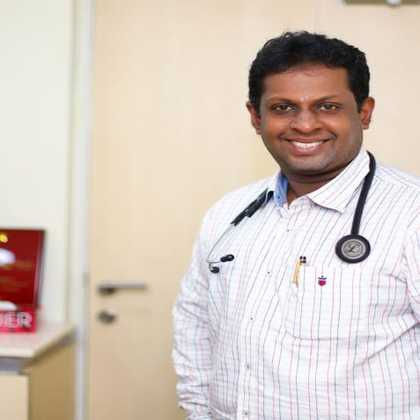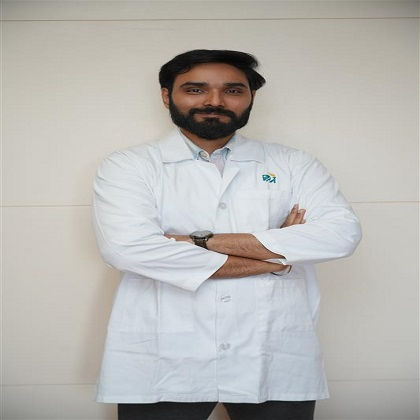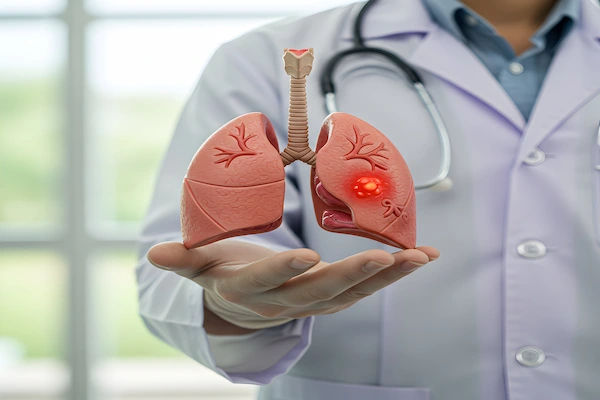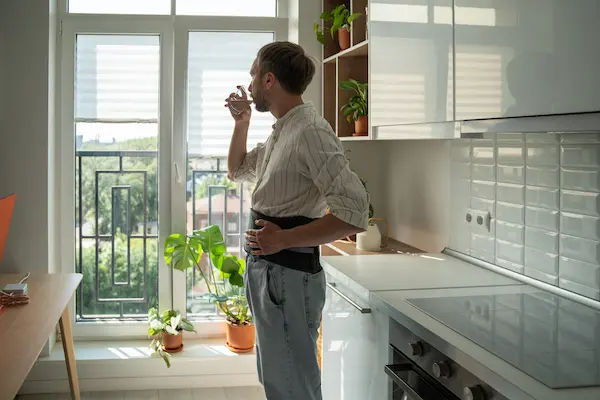Guide to Pulmonary Rehabilitations
Breathe easier & improve quality of life. Discover what pulmonary rehabilitation is, its key components (exercise, education, support), and how this structured program can help manage chronic lung conditions like COPD and pulmonary fibrosis. Start your journey to better lung health today.

Written by Dr. M L Ezhilarasan
Reviewed by Dr. Rohinipriyanka Pondugula MBBS
Last updated on 7th Oct, 2025

Introduction
Living with a chronic lung condition like COPD, pulmonary fibrosis, or severe asthma can feel like a constant battle for every breath. Everyday activities—climbing stairs, carrying groceries, even getting dressed—can become monumental tasks, leading to frustration, anxiety, and social isolation. But what if there was a proven way to break this cycle, to regain control, and to breathe easier? There is. It’s called pulmonary rehabilitation.
This comprehensive guide will walk you through everything you need to know about pulmonary rehabilitation. We'll explore what it is, who it's for, and what you can expect from a typical program. We'll delve into the science-backed benefits, from reducing breathlessness to boosting your mental well-being, and provide practical advice on how to get started. Think of this not as a medical treatment, but as a lifeline—a structured program designed to empower you to live a fuller, more active life despite your lung condition.
What is Pulmonary Rehabilitation? More Than Just Exercise
At its core, pulmonary rehabilitation is a supervised medical program designed to improve the health and well-being of people with chronic respiratory diseases. While exercise is a crucial component, it's a common misconception that rehab is just a gym class for the lungs. It's a holistic approach that combines exercise training, education, and psychological support tailored to your individual needs.
The Core Goal: Improving Your Quality of Life
The primary objective of pulmonary rehab isn't necessarily to cure your lung disease—that may not be possible. Instead, the goal is to maximize your functional capacity and independence. It aims to help you:
- Manage and reduce your symptoms, especially shortness of breath.
- Increase your stamina and strength for daily activities.
- Teach you how to use your medications effectively.
- Provide tools to cope with the anxiety and depression that often accompany chronic illness.
Who is a Candidate for Pulmonary Rehab?
Pulmonary rehabilitation is most commonly prescribed for individuals with Chronic Obstructive Pulmonary Disease (COPD), but it benefits a wide range of conditions, including:
- Interstitial Lung Disease (e.g., Pulmonary Fibrosis)
- Cystic Fibrosis
- Bronchiectasis
- Severe Asthma
- Before and after lung surgery (like a lung transplant or lung volume reduction)
- Pulmonary Hypertension
If your breathing condition limits your ability to perform daily tasks, you are likely a candidate. A doctor's referral is typically required to enroll in a program. If you're unsure if you qualify, consulting a pulmonologist online with Apollo24|7 can provide initial guidance.
Consult Top Specialists
The Multidisciplinary Team: Your Personal Support System
A key strength of pulmonary rehabilitation is its team-based approach. You won't be navigating this journey alone. Your team may include:
- Pulmonologists: Doctors who specialize in lung diseases and oversee your medical plan.
- Respiratory Therapists: Experts in lung function and breathing techniques.
- Physical Therapists: Professionals who design and supervise your exercise regimen.
- Registered Dietitians: Who provide nutritional counseling tailored to your needs (e.g., maintaining a healthy weight is crucial for lung function).
- Psychologists or Social Workers: Who offer support for the emotional and psychological challenges of chronic disease.
This collaborative multidisciplinary team ensures every aspect of your health is addressed.
What to Expect in a Pulmonary Rehabilitation Program?
A typical program runs for 6 to 12 weeks, with sessions two to three times per week. Let's break down the key components.
The Initial Assessment: Your Starting Point
Before you begin, the team will conduct a thorough evaluation. This includes tests of your lung function (spirometry), a walking test to measure your exercise capacity, and assessments of your muscle strength and overall health. This baseline helps create a personalized plan and track your progress.
The Exercise Training Component
This is the cornerstone of the program. The exercises are carefully monitored and start at a level that is safe for you.
- Endurance Training: This usually involves walking on a treadmill or using a stationary bike. The goal is to gradually increase how long you can exercise without becoming severely short of breath.
- Strength Training: Using light weights or resistance bands strengthens your arm and leg muscles. Stronger muscles require less oxygen to perform tasks, making daily activities easier.
- Breathing Techniques: You'll learn methods like pursed-lip breathing and diaphragmatic breathing to control shortness of breath during activity and at rest.
The Education and Counseling Component
Knowledge is power. Education sessions cover critical topics like:
- Understanding your lung disease and medications.
- Energy conservation techniques (pacing yourself throughout the day).
- Oxygen therapy, if needed.
- Healthy eating habits.
- Strategies for managing stress and anxiety.
- Action plans for recognizing and handling symptom flare-ups.
The Proven Benefits of Pulmonary Rehabilitation
The evidence for pulmonary rehab is overwhelming. It is one of the most effective non-drug treatments available for chronic lung disease.
Physical and Mental Health Improvements
Studies consistently show that participants experience:
- Reduced shortness of breath and fatigue.
- Improved exercise tolerance and muscle strength.
- Enhanced sense of control over their condition.
- Reduced symptoms of anxiety and depression.
Better overall quality of life.
Reducing Hospitalizations and Healthcare Costs
Perhaps one of the most significant benefits is that pulmonary rehabilitation can reduce hospital readmissions by up to 40% for COPD patients. By learning to manage their condition effectively, individuals have fewer exacerbations (flare-ups), leading to better health and lower medical bills.
Overcoming Common Barriers to Starting Pulmonary Rehab
It's normal to have concerns. Let's address two of the biggest ones.
"I'm Too Breathless to Exercise"
This is the most common fear, and the program is specifically designed for it. The exercises are started at an extremely low level and increased very gradually under close supervision. You will be taught how to breathe correctly to manage breathlessness. It's counterintuitive, but the right kind of exercise is the best long-term solution for reducing breathlessness.
"It's Too Far to Travel" and The Rise of Home-Based Programs
Accessibility is a real challenge. However, home-based pulmonary rehabilitation is an emerging and effective alternative. With technological advances, many programs now offer remote monitoring and coaching. If travel is a barrier for you, ask your doctor or search for programs that offer remote options.
How to Find a Pulmonary Rehabilitation Program Near You?
Start by talking to your primary care physician or pulmonologist. They can provide a referral. You can also search the directory provided by the American Association of Cardiovascular and Pulmonary Rehabilitation (AACVPR) on their website. When researching, ask about the program's schedule, location, cost, and insurance coverage.
Conclusion
Living with a chronic lung disease is challenging, but it doesn't have to define your life. Pulmonary rehabilitation offers a path forward—a proven strategy to reclaim your independence and breathe easier. It empowers you with the knowledge, skills, and confidence to manage your health effectively.
The first step is often the hardest. If you or a loved one struggles with breathlessness that impacts daily life, have a conversation with your doctor. Ask, "Am I a candidate for pulmonary rehabilitation?" It could be the most important question you ask for your health and well-being. You can start that conversation today by booking a consultation with a specialist on Apollo24|7.*
Consult Top Specialists
Consult Top Specialists

Dr. Ajay Joy K
Pulmonology Respiratory Medicine Specialist
7 Years • MBBS, MD (Pulmonary Medicine)
Angamaly
Apollo Hospitals Karukutty, Angamaly

Dr Abhishek Verma
Pulmonology Respiratory Medicine Specialist
5 Years • MD (Respiratory Medicine), PDCC (Interventional Pulmonology) Alumni SGPGIMS & KGMU Lucknow
Lucknow
Apollomedics Super Speciality Hospital, Lucknow
(50+ Patients)

Dr. S Mallikarjun Rao
Pulmonology Respiratory Medicine Specialist
22 Years • MBBS, MD (Pul.), FCCP
Hyderguda
Apollo Hospitals Hyderguda, Hyderguda
(75+ Patients)

Dr. Vallabhaneni Viswambhar
Pulmonology Respiratory Medicine Specialist
19 Years • MBBS, MD (PULMONOLOGY)
Chennai
Apollo Speciality Hospitals OMR, Chennai
(100+ Patients)

Dr. Vybhav Vijendra
Pulmonology Respiratory Medicine Specialist
10 Years • MBBS, MD
Bengaluru
Apollo Hospitals Sheshadripuram, Bengaluru
Consult Top Specialists

Dr. Ajay Joy K
Pulmonology Respiratory Medicine Specialist
7 Years • MBBS, MD (Pulmonary Medicine)
Angamaly
Apollo Hospitals Karukutty, Angamaly

Dr Abhishek Verma
Pulmonology Respiratory Medicine Specialist
5 Years • MD (Respiratory Medicine), PDCC (Interventional Pulmonology) Alumni SGPGIMS & KGMU Lucknow
Lucknow
Apollomedics Super Speciality Hospital, Lucknow
(50+ Patients)

Dr. S Mallikarjun Rao
Pulmonology Respiratory Medicine Specialist
22 Years • MBBS, MD (Pul.), FCCP
Hyderguda
Apollo Hospitals Hyderguda, Hyderguda
(75+ Patients)

Dr. Vallabhaneni Viswambhar
Pulmonology Respiratory Medicine Specialist
19 Years • MBBS, MD (PULMONOLOGY)
Chennai
Apollo Speciality Hospitals OMR, Chennai
(100+ Patients)

Dr. Vybhav Vijendra
Pulmonology Respiratory Medicine Specialist
10 Years • MBBS, MD
Bengaluru
Apollo Hospitals Sheshadripuram, Bengaluru
More articles from Rehabilitation
Frequently Asked Questions
Is pulmonary rehabilitation covered by insurance?
Yes, most insurance plans, including Medicare Part B, cover pulmonary rehabilitation for qualifying conditions like COPD. Coverage details (number of sessions, co-pays) can vary, so it's best to check with your insurance provider and the rehab program directly.
How long does a typical pulmonary rehab program last?
A standard program usually lasts between 6 to 12 weeks, with sessions held 2 to 3 times per week. The duration can be adjusted based on your individual progress and needs.
What should I wear to pulmonary rehab sessions?
Wear comfortable, loose-fitting clothing and supportive shoes suitable for exercise, like sneakers. Avoid restrictive clothing that might make breathing difficult.
Can I do pulmonary rehab at home?
Yes, home-based pulmonary rehabilitation is a growing field. It often involves remote monitoring and virtual coaching. While not as widely available as center-based programs, it's an excellent option for those with mobility or transportation issues. Discuss this with your doctor.
What happens after I finish the program?
A good program will provide you with a maintenance plan to continue the exercises and techniques you learned. Many graduates join support groups or continue with independent home exercises to sustain the benefits long-term.

